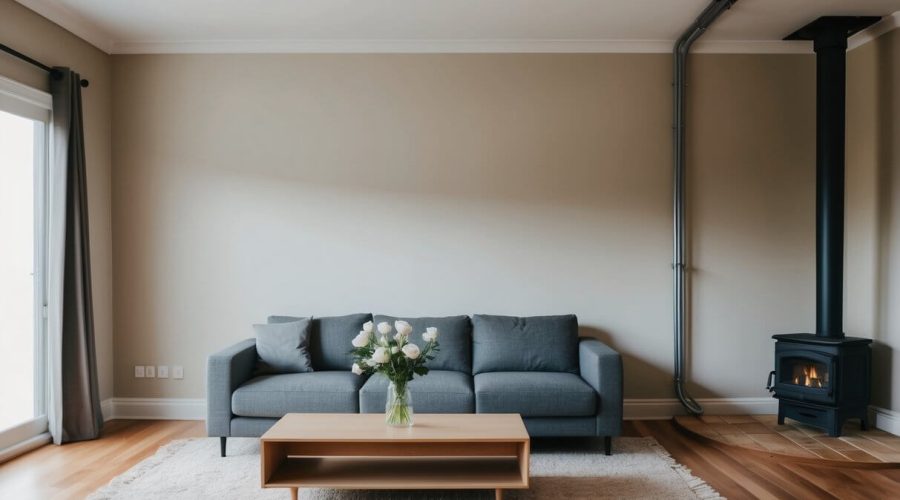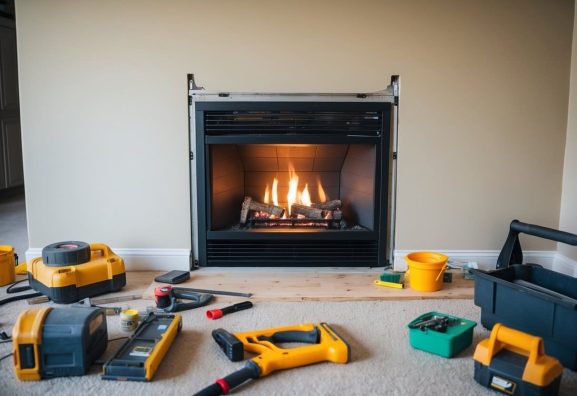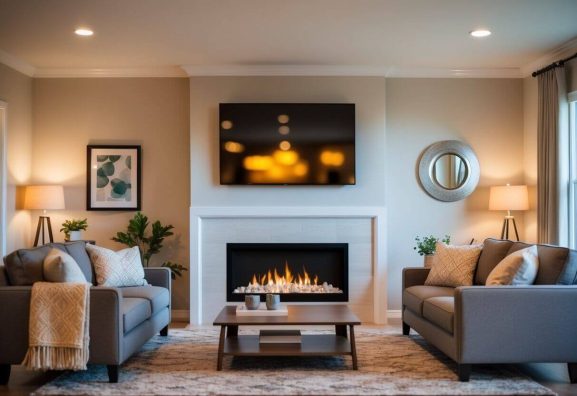Where to Install a Gas Fireplace in Your Home
A gas fireplace can be an excellent addition to any home, providing warmth, ambiance, and convenience with far less effort than traditional wood-burning options. Choosing the right location for installation is crucial, as it impacts both functionality and aesthetics. Homeowners looking to enhance their living space should consider installation in commonly used areas like the living room, family room, or even outdoor patios for an inviting atmosphere.
Before undertaking the installation process, it is essential to assess the prerequisites, such as existing venting systems and gas lines. Proper preparation will ensure energy efficiency and optimal performance of the fireplace. Understanding the specifics of installation can lead to a seamless experience that maximizes the benefits of a gas fireplace while minimizing any potential drawbacks.
Key Takeaways
-
- Selecting the right location enhances both functionality and aesthetics.
- Proper preparation is key for energy efficiency and installation success.
- Understanding the installation process ensures a smooth and beneficial experience.
Choosing the Right Gas Fireplace
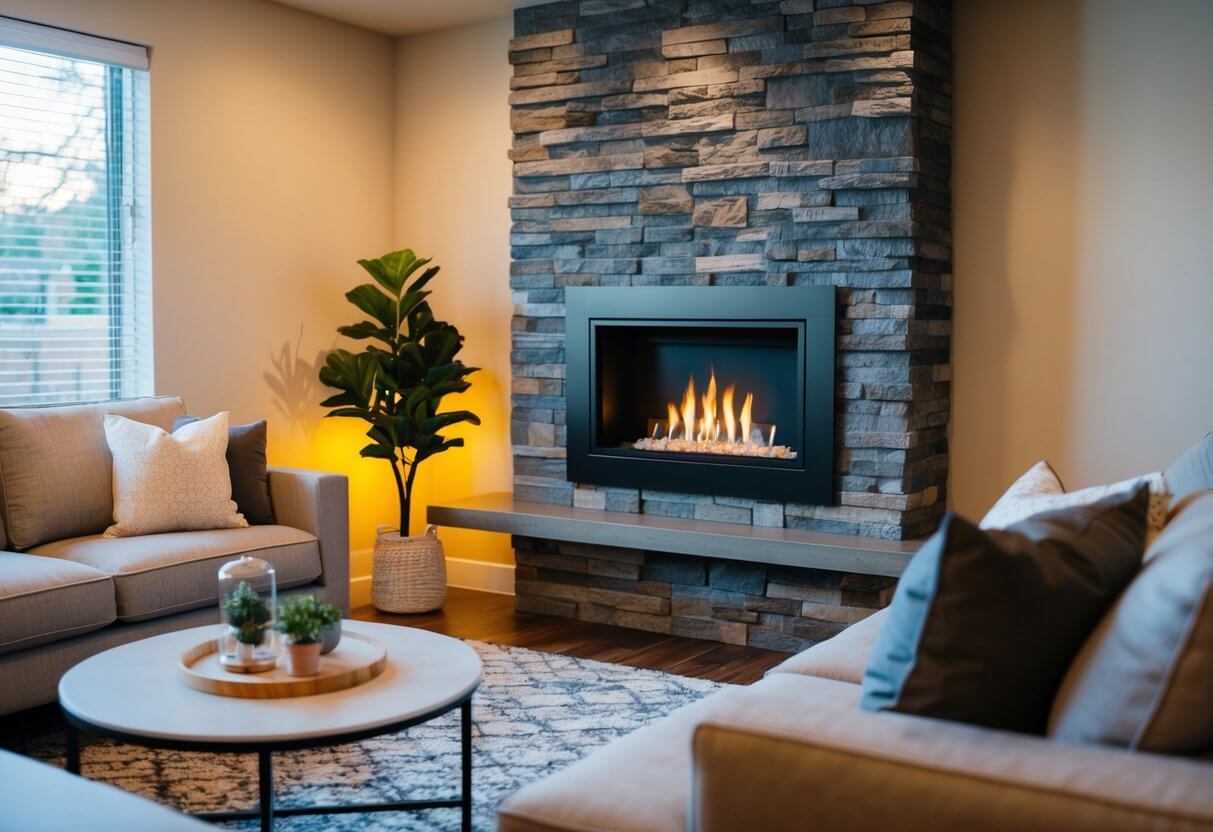
Selecting the appropriate gas fireplace involves careful consideration of various factors, including types, space requirements, and fuel options. Each choice impacts both performance and aesthetic appeal.
Types of Gas Fireplaces
Gas fireplaces come in several types, each suited to different needs and preferences. The three main options are vented, ventless, and gas fireplace inserts.
- Vented Gas Fireplaces require a flue or vent system. They provide realistic flames and are known for their high efficiency.
- Ventless Gas Fireplaces do not require a venting system, making them easier to install. However, they rely on oxygen from the room and might not be suitable for large spaces.
- Gas Fireplace Inserts are designed to fit into existing wood-burning fireplaces, converting them to gas. This option offers a good balance of efficiency and convenience.
Assessing Space and Size Requirements
Before purchasing, it’s crucial to assess available space and size requirements.
- Room Size: The fireplace must produce sufficient heat output to warm the space effectively. A fireplace rated at 30,000 BTUs typically heats an area of about 1,000 square feet.
- Installation Location: Consider the proximity to gas lines and ventilation. A poorly located unit may lead to inefficiencies and higher costs.
- Aesthetic Fit: The fireplace should complement the room’s decor. Smaller, sleek designs may work well in compact spaces, while larger units can create a focal point in expansive areas.
Fuel Options: Natural Gas and Propane
When selecting a gas fireplace, the choice between natural gas and propane can influence functionality and installation.
- Natural Gas: This option is often less expensive and more convenient if local lines are available. It offers reliable energy efficiency and a steady supply.
- Propane: Typically used in areas without natural gas access, propane burns hotter and can be stored, making it flexible for various locations. Installation of propane tanks is necessary, adding to initial costs.
Choosing between these fuels depends on availability and the specific heating needs of the home. Each fuel type can affect the overall operation costs and efficiency of the gas fireplace.
Installation Prerequisites
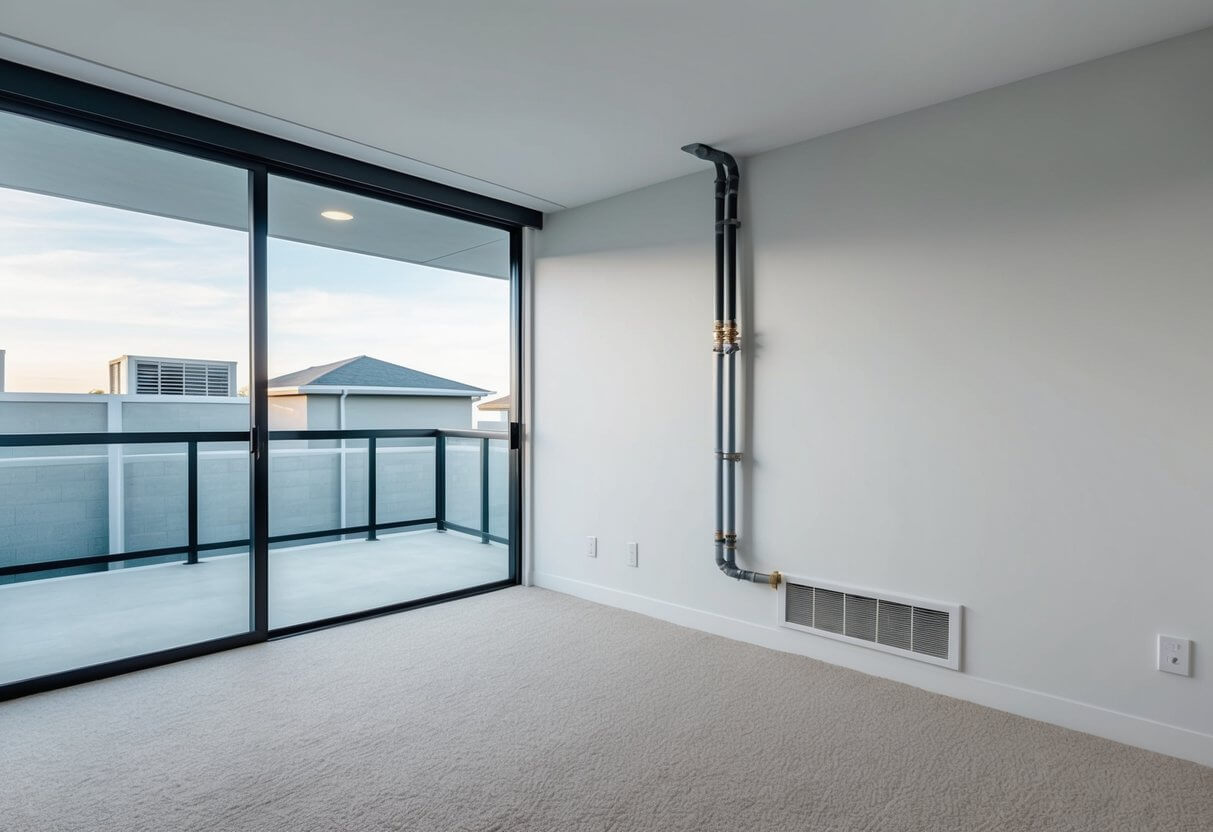
Before installing a gas fireplace, it is essential to address several prerequisites. These include understanding local building codes, securing necessary permits, and implementing safety measures.
Understanding Local Building Codes
Local building codes dictate the installation specifics for gas fireplaces, ensuring safety and compliance. It is vital to research the codes relevant to the installation location. These regulations may include the distance the fireplace must be from combustible materials, requirements for venting systems, and specifications for gas line installations.
For example, codes often mandate the installation of ventilation to facilitate proper airflow and minimize indoor air quality issues. Homeowners can typically find this information on their municipality’s website or through local building departments. It is advisable to consult with a licensed professional familiar with these codes.
Securing Necessary Permits
Obtaining the correct permits is crucial before starting the installation of a gas fireplace. Most local building authorities require permits to ensure compliance with safety regulations. Permits may encompass aspects such as gas line installation, chimney setup, and overall installation practices.
To secure a permit, individuals usually need to submit specific documentation, including installation plans and possibly proof of insurance. They should check their local authority’s website or contact the relevant office directly to understand specific requirements and any associated fees. Neglecting this step can lead to fines or complications during inspections.
Safety Measures and Precautions
Safety is paramount when installing a gas fireplace. Key precautions include ensuring proper ventilation, which is essential to prevent the buildup of harmful gases like carbon monoxide. Homes should be equipped with a carbon monoxide detector within close proximity to the fireplace.
Additionally, before installation, one must inspect the site for any potential hazards such as flammable materials. Implementing basic safety protocols, such as turning off gas lines during installation and using appropriate protective equipment, is critical. Consulting with professionals or following manufacturer instructions can help mitigate risks associated with gas fireplace installations.
Preparing for Installation
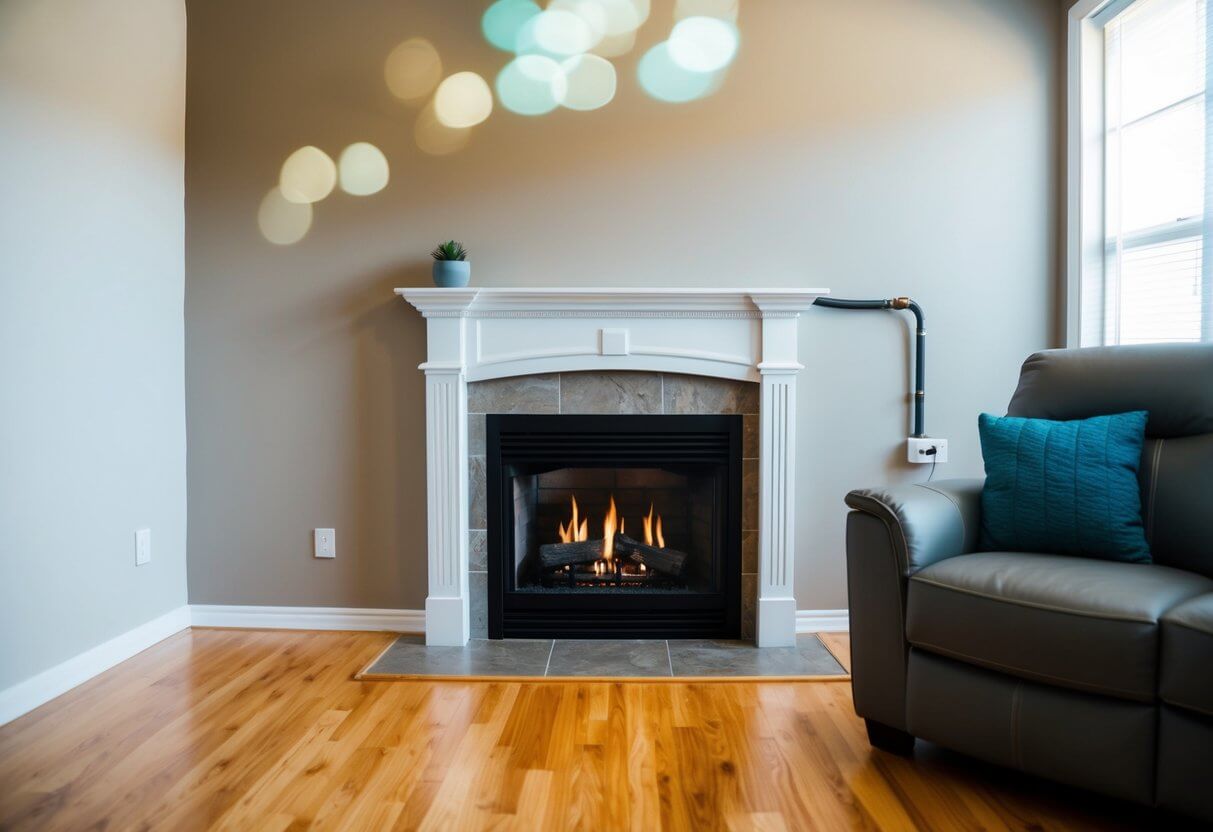
Before installing a gas fireplace, careful planning and preparation are essential. This includes selecting an appropriate location, arranging necessary gas lines and venting, and considering electrical wiring requirements. Each of these steps contributes to a safe and efficient installation.
Selecting the Installation Location
Choosing the right spot for the gas fireplace is crucial. It should ideally be located in a central area of the room to maximize heat distribution and visual appeal.
Key considerations include:
- Clearance: Ensure there is adequate space from combustible materials, following local codes.
- Access to Gas and Venting: The location must allow for easy connection to gas lines and proper venting options.
- Aesthetic Fit: The fireplace should complement the room’s decor, enhancing both functionality and style.
Identifying a suitable spot may involve marking potential placements to visualize how they would fit into the room’s layout.
Arranging Gas Line and Venting
Proper gas line installation is vital for safety and performance. The gas supply must be accessible from the installation location.
Important steps include:
- Consulting a Professional: It is strongly recommended to hire a licensed technician for gas line work.
- Piping Material: Use appropriate piping materials like steel or copper that meet local building codes.
Ventilation is key for safe operation.
- Vent System Type: Depending on the fireplace, a direct vent or ventless system may be required.
- Proper Vent Placement: Ensure that vent pipes lead to the exterior without obstructions to ensure effective exhaust of gases.
Electrical Wiring Considerations
Electrical wiring can play a significant role in the functionality of the gas fireplace.
Key aspects to consider:
- Power Supply: Ensure a dedicated circuit is available to power the fireplace and any additional features, such as remote controls.
- Code Compliance: All electrical work must comply with local codes and regulations.
In some cases, installing a wall switch may be preferable for convenience and accessibility. Always consult an electrician if unsure about wiring requirements to ensure safety and functionality.
The Installation Process
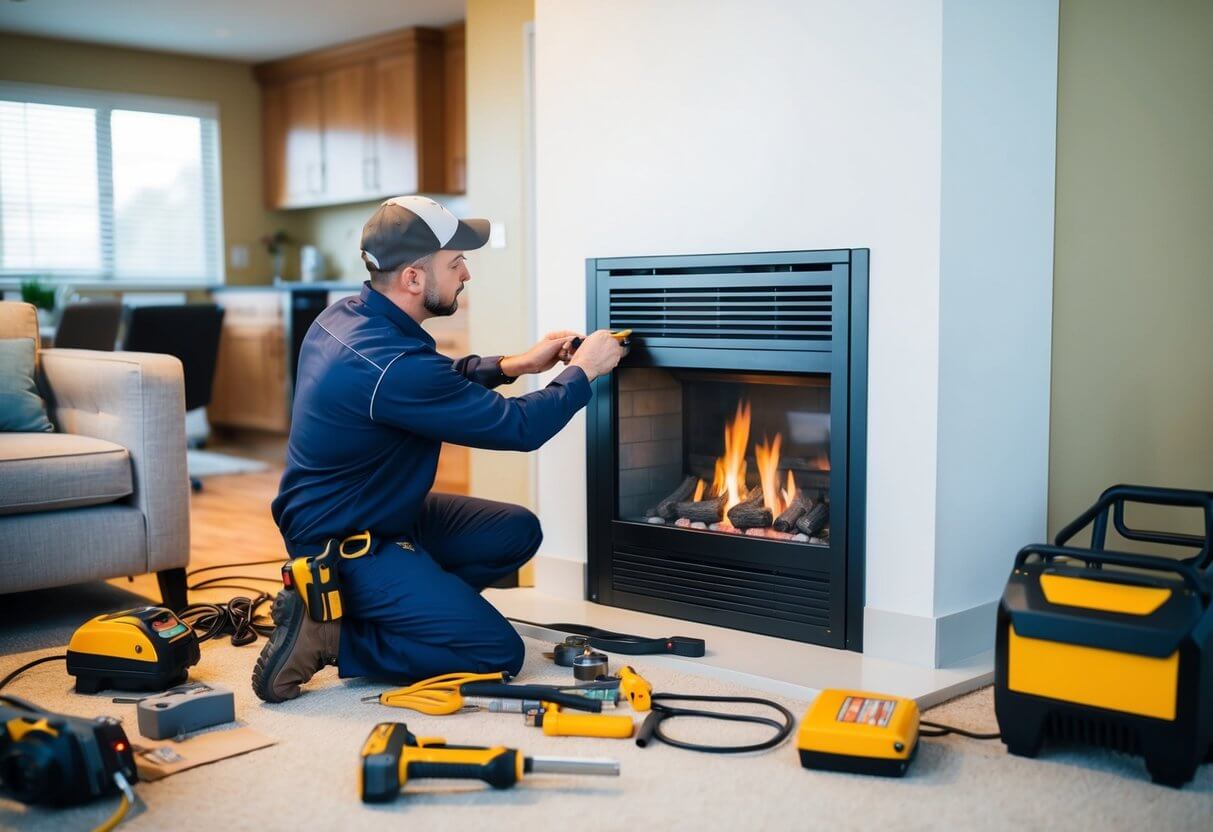
Installing a gas fireplace involves several key steps to ensure proper functionality and safety. Attention to detail during the installation can prevent issues later. The following sections provide guidance on critical components of the installation process.
Installing the Gas Fireplace Unit
Begin by selecting an appropriate location for the gas fireplace. The area must allow adequate clearance from combustible materials as specified by the manufacturer’s instructions. Position the unit on a platform to provide stability and ensure it is level.
Secure the fireplace to the floor as needed, often using brackets or screws. After placing the unit, check that the opening for the venting system aligns with the fireplace’s specifications. Follow local building codes to confirm compliance during installation.
Venting System Set-Up
A proper venting system is essential for the safe operation of a gas fireplace. The type of venting system may vary based on the fireplace model, either direct vent or B-vent. Each design serves to expel combustion gases and draw in air efficiently.
For direct vent units, install the vent pipe through an exterior wall, ensuring it has the right slope for gas flow. Secure connections with high-temperature silicone sealant to prevent leaks. Always follow the manufacturer’s guidelines for venting lengths and angles to maintain warranty compliance.
Gas Line Connection and Testing
The connection of the gas line requires precision. It is recommended to hire a licensed professional for this step, as improper installation can lead to leaks. First, run the gas line to the fireplace, ensuring it meets local codes and safety standards.
After connecting, it is crucial to test for leaks using a soap solution. If bubbles form, tighten connections as needed. Once confirmed leak-free, turn on the gas supply and check the ignition sequence, verifying that the fireplace operates correctly before finalizing installation. Regular maintenance and service will enhance the fireplace’s operation and safety throughout its lifespan.
Post-Installation Considerations
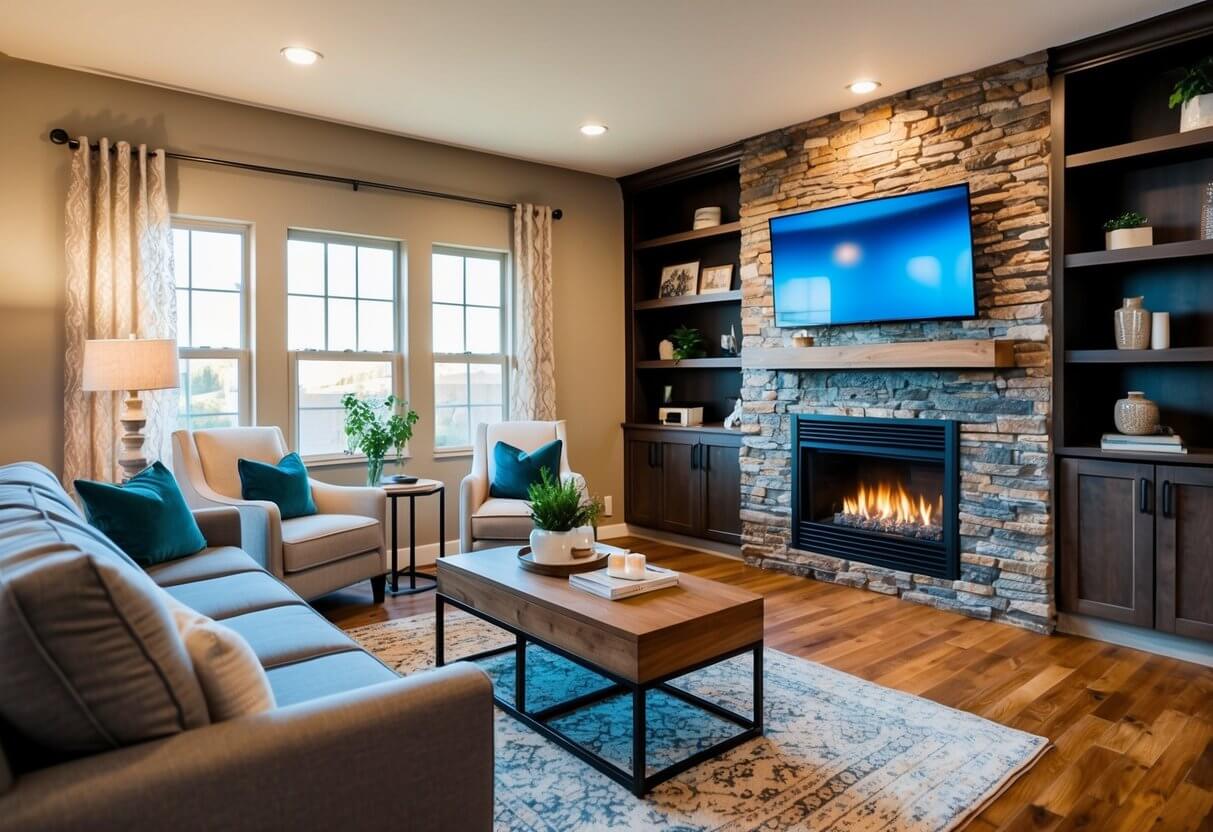
Ensuring safety and maintenance after installing a gas fireplace is essential. Proper checks and ongoing responsibilities will help maintain efficiency and prevent hazards like carbon monoxide leaks.
Final Checks and Safety Inspections
After installation, conduct thorough safety inspections. Verify that the fireplace is properly vented and that all connections are secure. Inspect for any gas leaks using a soapy water solution; bubbles indicate leakage.
Next, ensure the installation complies with local regulations and safety codes. It’s advisable to have a professional perform a final check. They will assess the efficiency of the appliance and confirm that the unit operates within its specified British Thermal Units (BTUs) range for optimal heating.
Lastly, confirm that carbon monoxide detectors are installed nearby, as these are crucial for safety. Test the alarm to ensure it functions properly in case of emissions.
Understanding Maintenance Responsibilities
Regular maintenance is essential to keep the gas fireplace in optimal condition. Owners should schedule annual service checks with a qualified technician. This includes inspecting gas connections, cleaning components, and assessing venting systems for blockages.
Homeowners should also maintain the exterior and surrounding areas of the fireplace. Cleaning the glass and ensuring that the logs are arranged correctly can enhance both safety and efficiency.
An installed gas fireplace typically requires cleaning of the burner and ignition systems, which can prevent common issues down the line. Keeping an eye on the chimney and venting systems is vital to avoid buildup that may lead to hazardous situations.
Frequently Asked Questions

This section addresses common inquiries regarding the installation of gas fireplaces. It covers installation methods, costs, placement considerations, and integration with existing structures to guide homeowners effectively.
How to install a gas fireplace in a home without an existing one?
Installing a gas fireplace in a home that doesn’t already have one involves several steps. It typically starts with choosing the right model and location. A professional will assess the gas line requirements, venting options, and clearance space around the unit.
What are the costs associated with gas fireplace installation?
The costs for installing a gas fireplace can vary widely. Factors include the type of fireplace, installation complexity, and any necessary modifications to gas lines or venting systems. Homeowners should budget for both the unit and labor, which may range from a few hundred to several thousand dollars.
Can a gas fireplace be installed on an interior wall of the home?
Yes, a gas fireplace can be installed on an interior wall. This is often a popular option for maximizing heat distribution. Proper ventilation and clearance from combustible materials are essential to ensure safety and compliance with building codes.
What considerations are there for installing a gas fireplace on an exterior wall?
When installing on an exterior wall, factors such as venting requirements and insulation must be considered. It’s crucial to ensure the venting system allows for proper exhaust. Additionally, homeowners may need to address any potential heat loss if the wall is poorly insulated.
How can a gas fireplace be integrated into an existing chimney structure?
Integrating a gas fireplace into an existing chimney structure is possible but requires careful planning. A professional may utilize a gas insert designed to fit within the chimney flue. It is important to ensure the existing chimney is suitable for gas venting and adheres to all safety regulations.
What are the best practices for placing a fireplace within a home?
Best practices for fireplace placement include considering the room’s layout and intended use. It is beneficial to position the unit where it can distribute heat effectively. Homeowners should also ensure that there is adequate clearance from furniture and other objects for safety and functionality.

